Glide Beneath the Pines: Discover Shiroyama Park by SUP
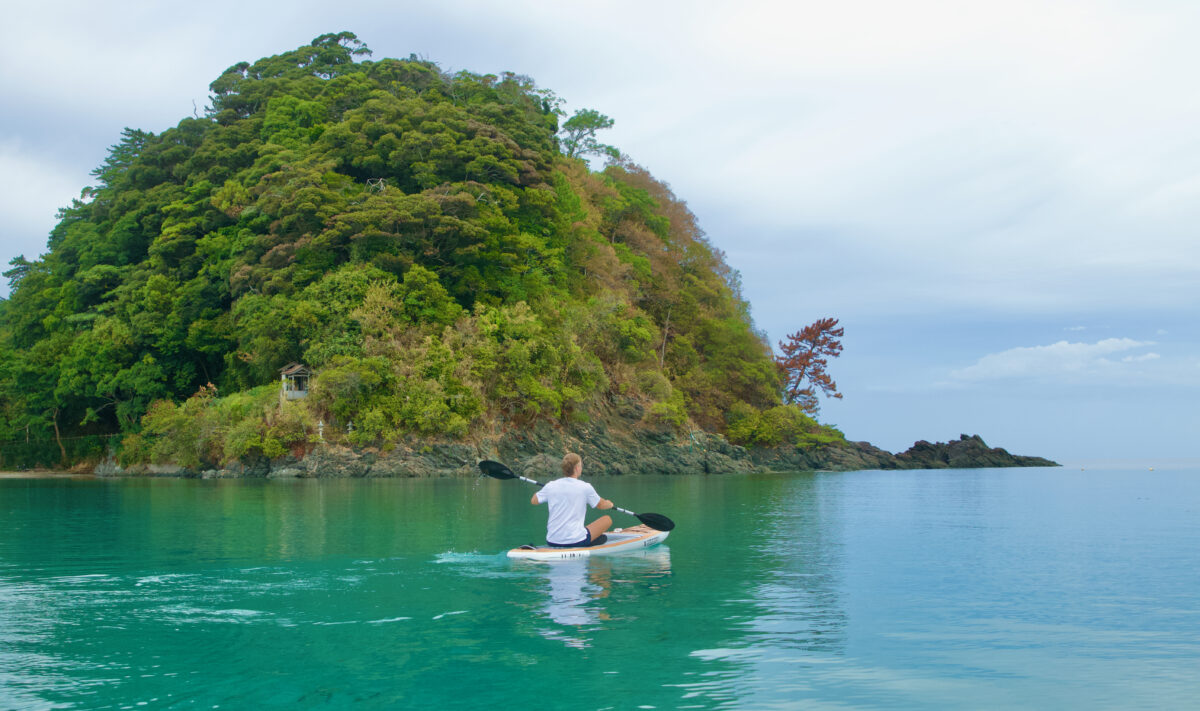
One of the most relaxing outdoor activities in Takahama is getting on a paddleboard and discovering the dramatic coastal scenery around Shiroyama Park. The calm, clear sea here is perfect for stand-up paddle boarding (SUP), letting you glide past pine-covered hillsides, hidden coves, and natural sea caves like Meikyō-dō, which was once used as a lookout point. You’ll have a sense of adventure as you drift beneath cliffs that once watched over samurai ships centuries ago.
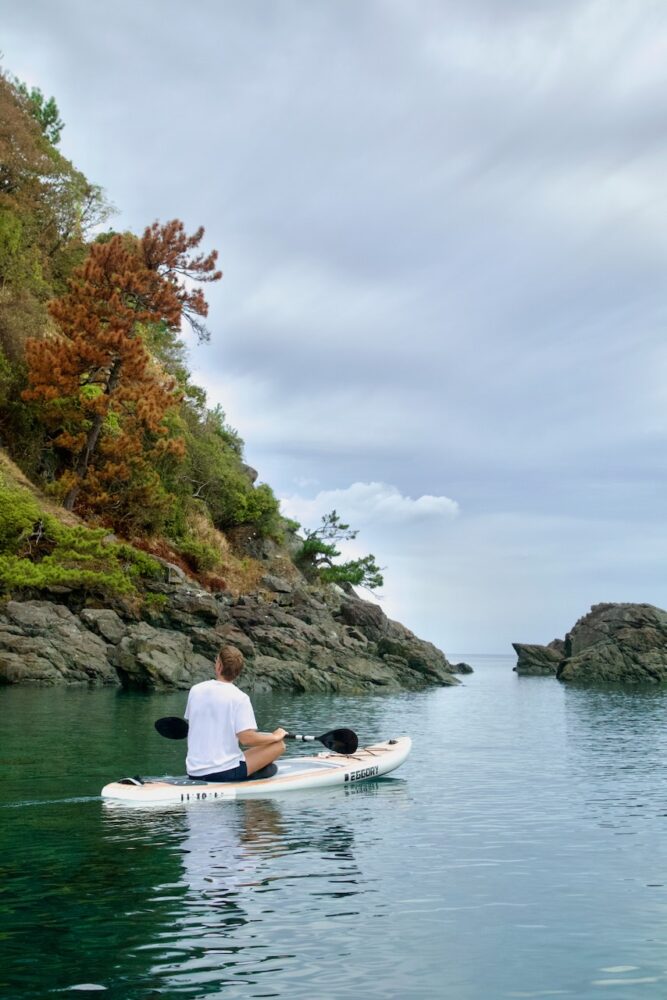
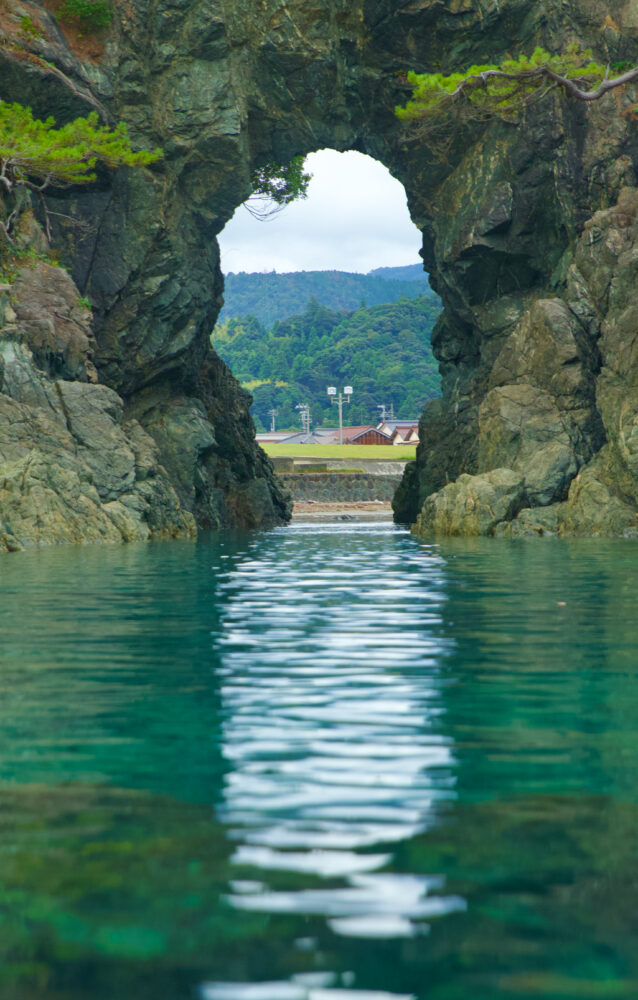
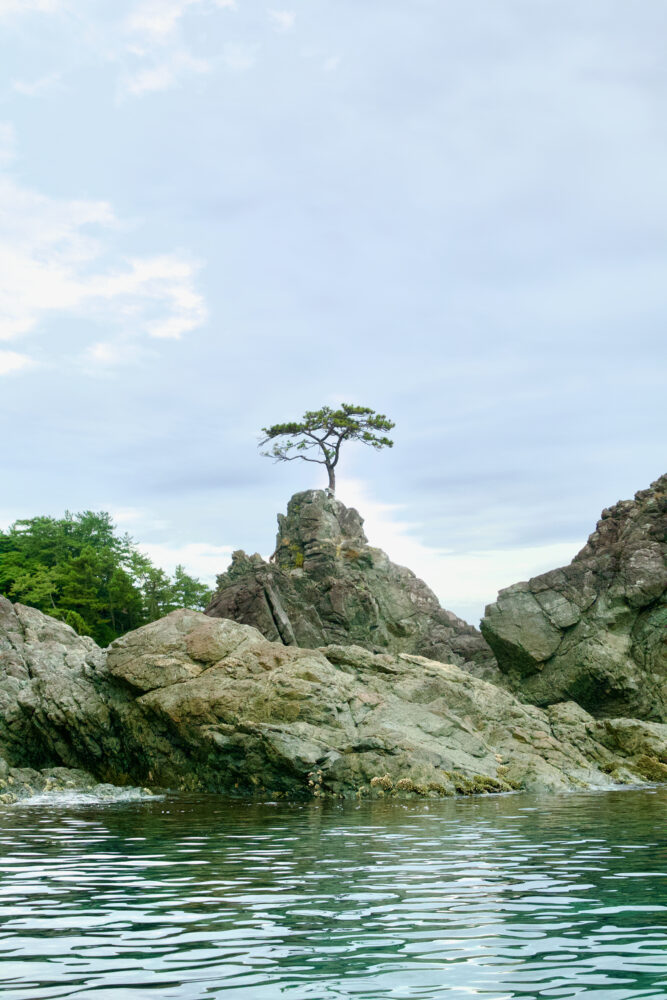
The park sits on a rocky coastal headland formed from ancient volcanic and sedimentary rock. Over centuries, the constant pounding of waves and sea spray has carved out natural sea caves, tunnels, and striking rock formations such as Meikyō-dō Cave.
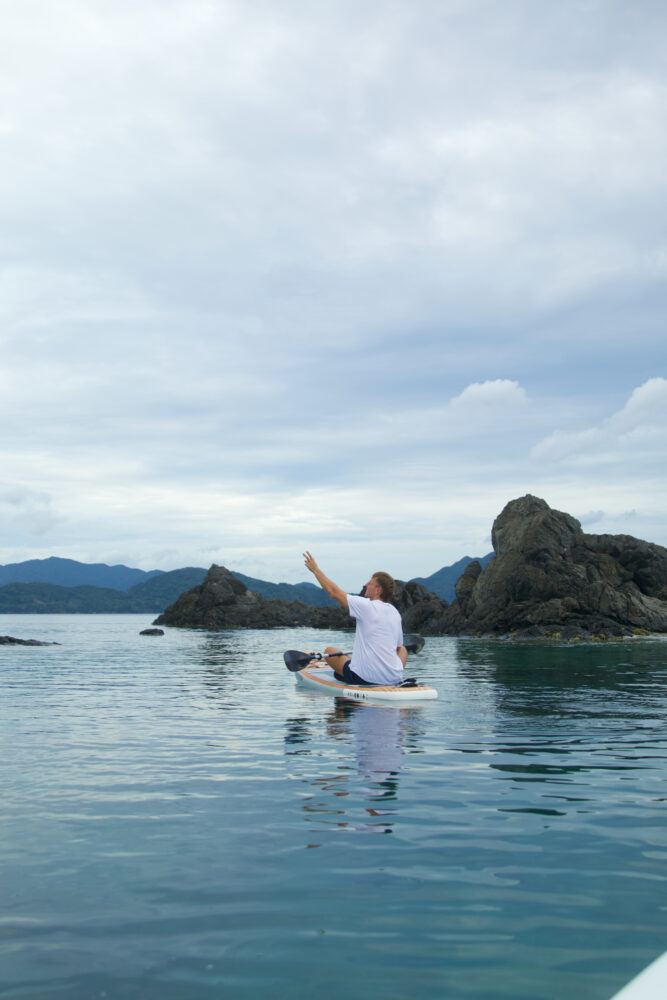
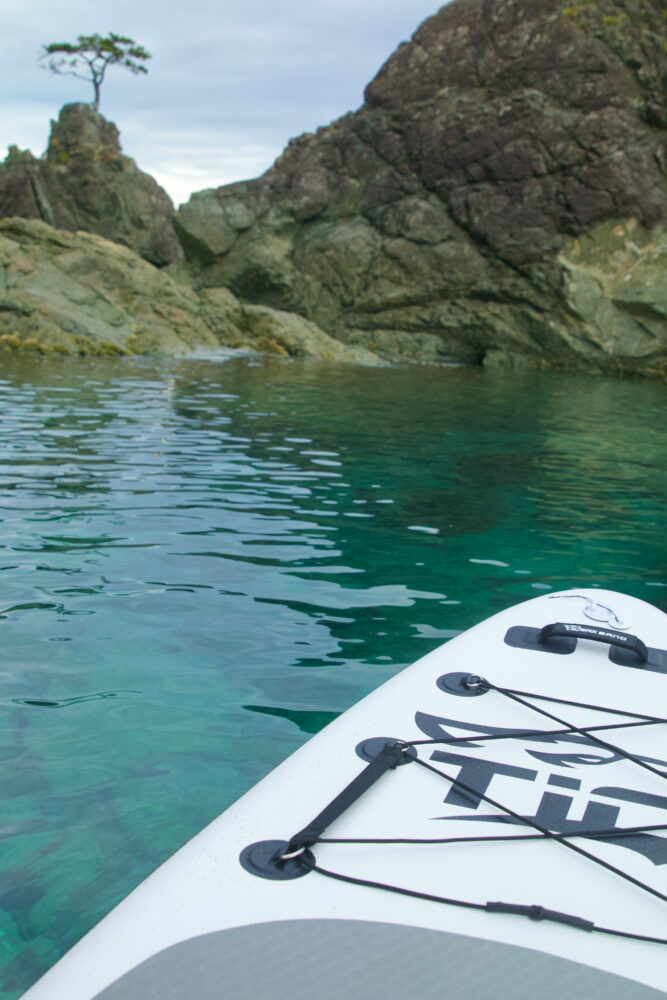
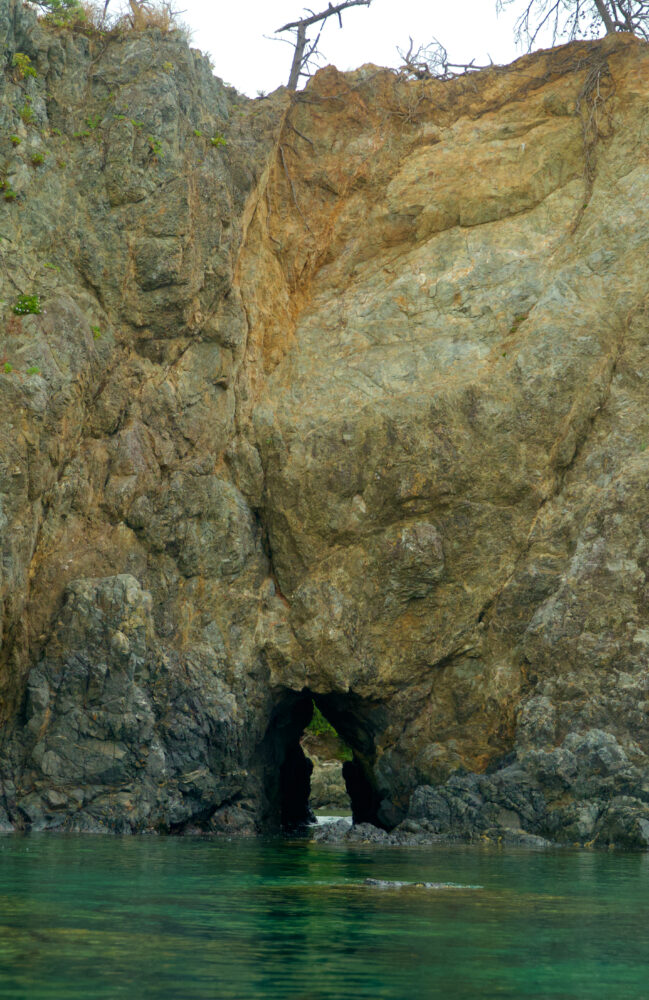
If you’re lucky, you’ll see seabirds gliding overhead or resting on rocky outcrops — a peaceful reminder that this coastline is full of life. On a sunny day, the water shifts from deep blue to turquoise, making the entire experience feel like you’re paddling through a living painting.
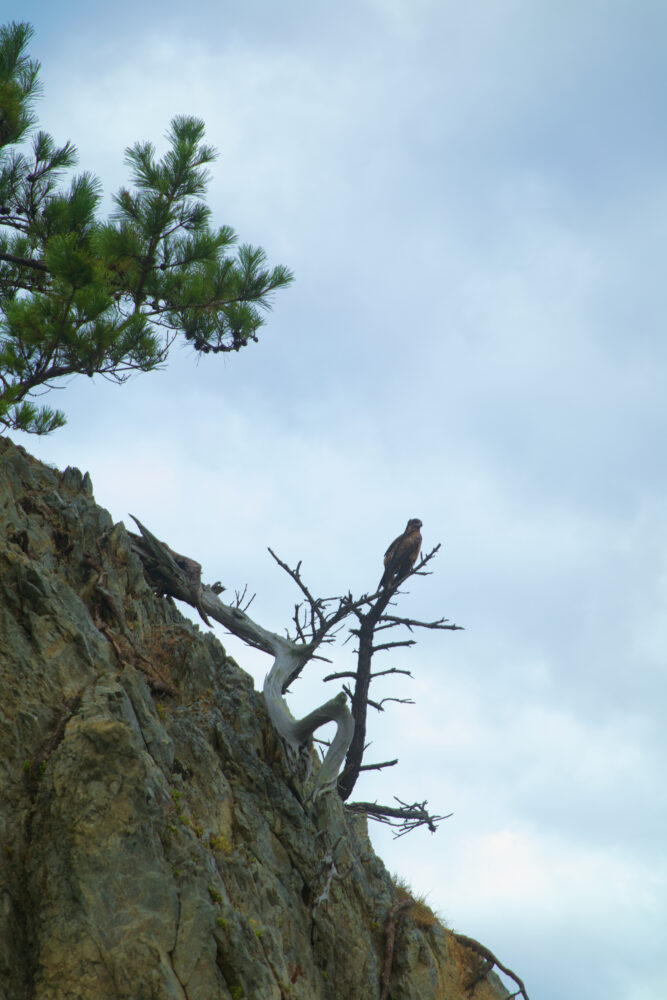
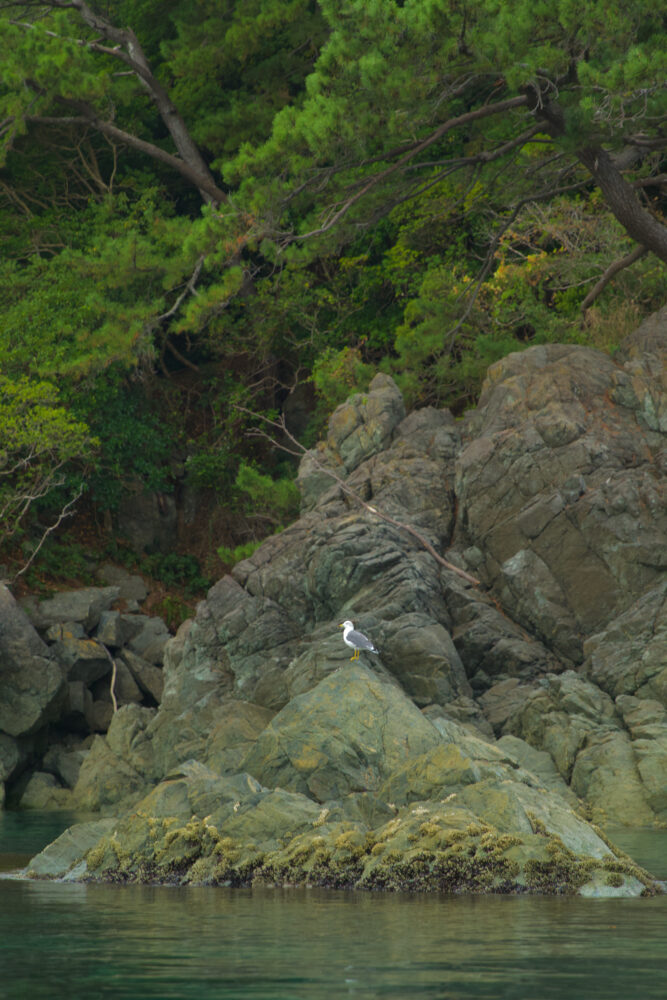
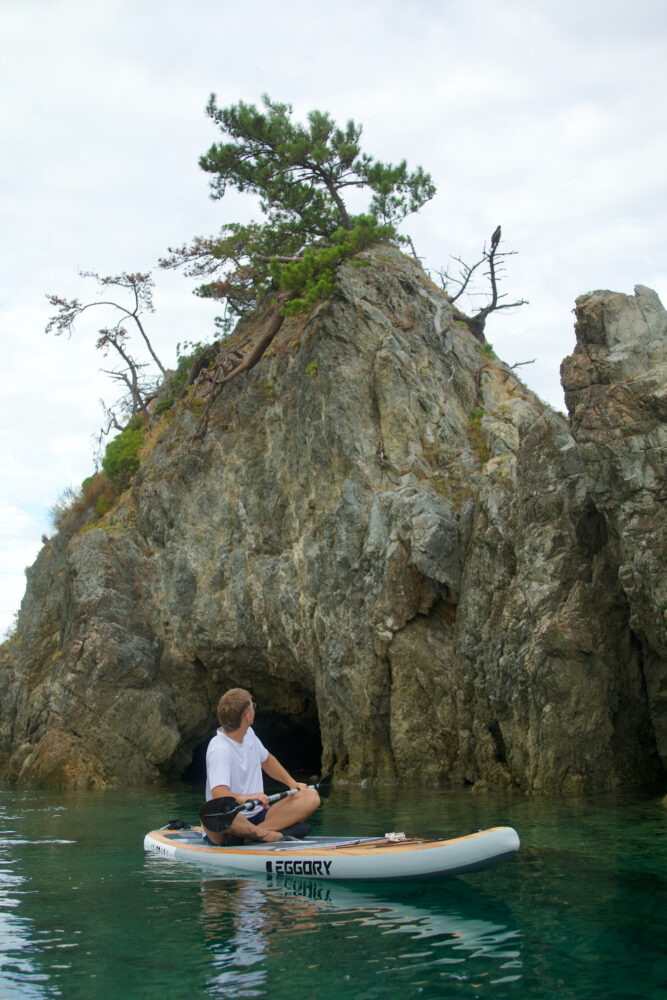
You will likely come across Japanese Kite which have their nests in the forested area of Shiroyama Park and the occasional seagull taking a rest.
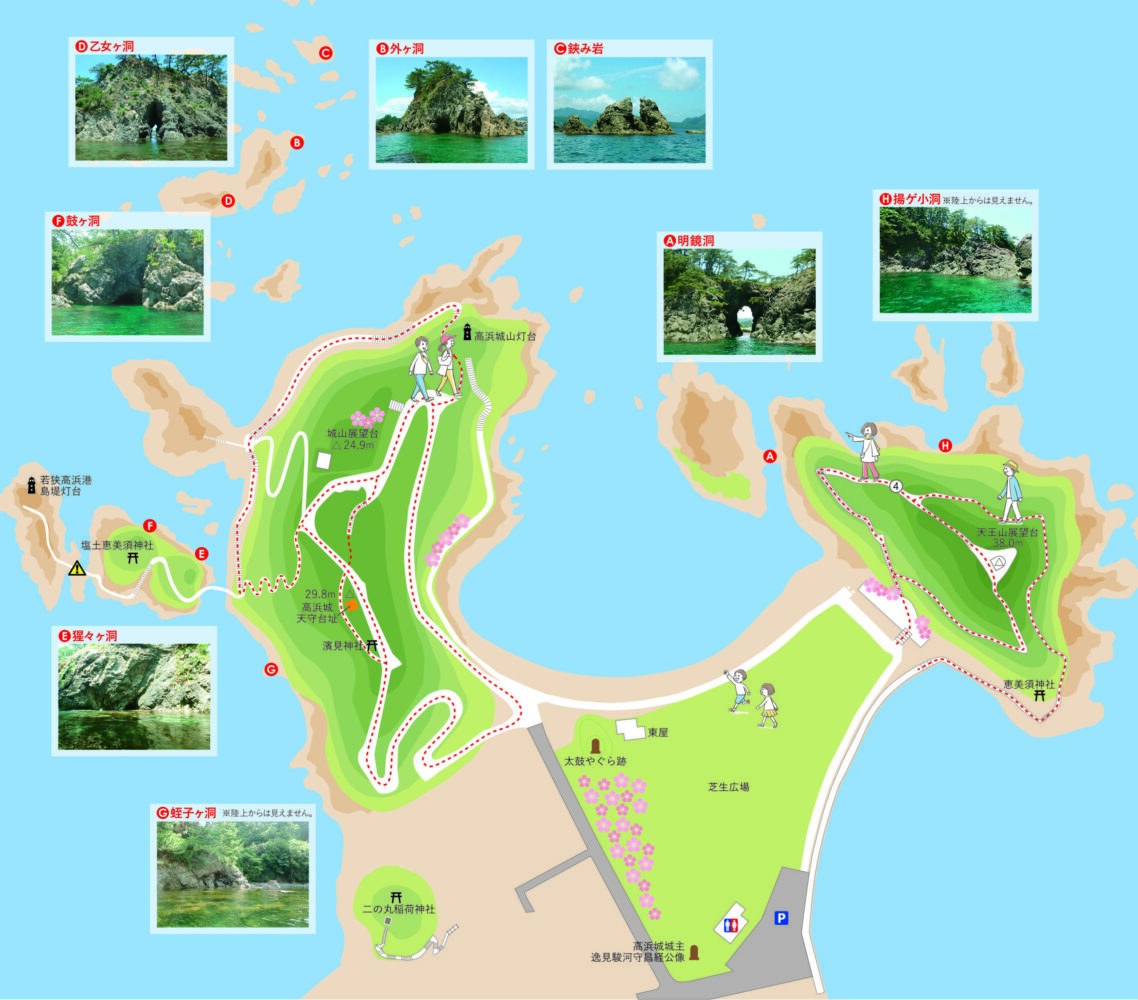
Along the base of the cliffs, there are smaller sea caves and arches you can find while paddle boarding or snorkeling. They all have local names but aren’t marked on Google maps. Below is a list of the names of each cave and their meaning and origins.
A. 明鏡洞 (Meikyō-dō)
- Literal meaning: “Bright Mirror Cave”
- Origin: 明鏡 (Meikyō) means “clear mirror” — it comes from the idiom 明鏡止水 (meikyō shisui), describing a mind as clear and calm as a polished mirror and still water.
- The cave’s water reflects sunlight like a mirror, creating a serene, reflective scene.
B. 外ヶ洞 (Sotogahora)
- Literal meaning: “Outer Cave”
- Origin: 外 (soto) means “outside,” and 洞 (hora) is an old word for cave.
- Likely named because it’s the outermost or furthest cave along the coastal cluster.
C. 鋏岩 (Hasami Iwa)
- Literal meaning: “Scissors Rock”
- Origin: 鋏 (hasami) means “scissors,” and 岩 (iwa) means “rock.”
- It probably got this name because the rocks split or form a shape that looks like open scissors or blades.
D. 乙女ヶ洞 (Otomegahora)
- Literal meaning: “Maiden’s Cave”
- Origin: 乙女 (otome) means “maiden” or “young girl.”
- These kinds of names often come from legends — for example, it may have been a place where local stories said a young woman hid or was associated with local folklore about purity or romance.
E. 猩々ヶ洞 (Shōjōgahora)
- Literal meaning: “Shōjō Cave”
- Origin: 猩々 (shōjō) is a mythical creature in Japanese and Chinese folklore — a red-haired sea spirit or sake-loving sprite.
- This cave might have reddish rocks, or local stories might say it was the dwelling of a Shōjō.
F. 鼓ヶ洞 (Tsutsumigahora)
- Literal meaning: “Drum Cave”
- Origin: 鼓 (tsutsumi) means “drum.”
- It might be named for an echo effect — when waves hit the cave, it could sound like a beating drum inside.
G. 蛭子ヶ洞 (Ebisugahora)
- Literal meaning: “Ebisu’s Cave”
- Origin: 蛭子 (Ebisu) is a popular Shinto deity of fishermen, luck, and prosperity — also called Hiruko in mythology.
- Likely linked to the area’s fishing culture and local fishermen’s prayers for safety and good catches.
H. 揚げ小洞 (Agekohora)
- Literal meaning: “Little Raised Cave”
- Origin: 揚げ (age) means “raised up” or “lifted.” 小 (ko) means “small.” 洞 (hora) means “cave.”
- Probably describes a small cave higher up on the cliffside or one that appears raised when viewed from the sea.



